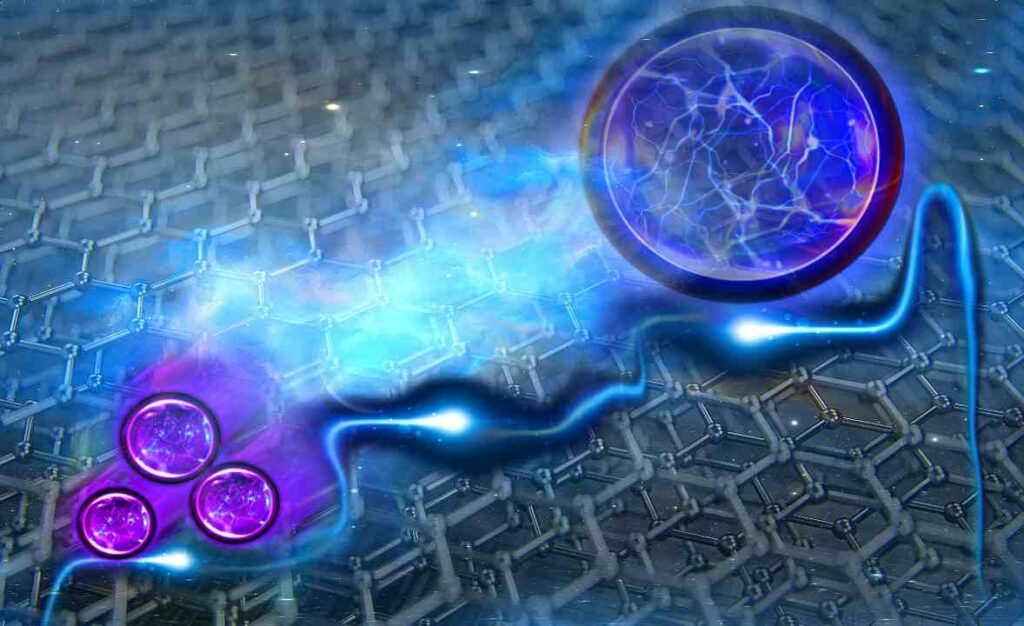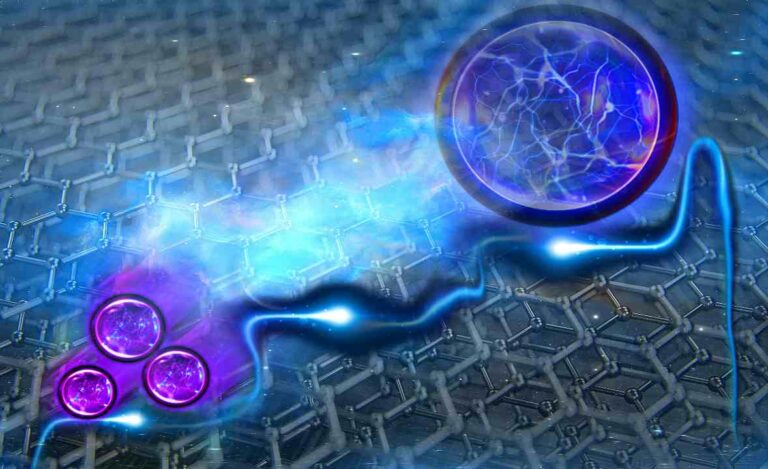Study Finds Electrons in Graphene Behaving as Fractional Particles
In physics class, we are taught that an electron is negatively charged both in high school and in other classes that involve physics lessons and the unit of electricity is the electron because it carries one negative charge and this is present in almost all natural substances.
Nevertheless, occasionally, electrons may be split into parts of what it used to hold in terms of charge, a condition known as ‘fractional charge’ if the phenomenon can be harnessed and fashioned, it may have a bearing in enabling the manufacture of more immune quantum computers.

This behavior is exemplified by the “fractional quantum Hall effect,” which has been observed only a few times in the whole history of physics, and that at fairly intense magnetic fields. In recent years, scientists have discovered this sort of impact in a material which is not as highly influenced by magnetic force in the same manner. MIT physicists have now detected the fractional charge effect in a simpler material: five layers of graphene, an isolated carbon atom arrangement that is derived from graphite.
On aligning the layers of graphene in a step like manner, the electrons are naturally guided as fractions of a charge as the structure created is a step like structure and does not require a magnetic field to be applied on the material. Their findings are published in Nature where they undertake original research in their field.
The observations constitute the first evidence of the so-called ‘fractional quantum anomalous Hall effect’ in crystalline graphene, a material that was believed not to exhibit such an effect because it is not influenced by a magnetic field. According to Long Ju, an assistant professor of physics at MIT, and one of the authors of the study, “This five-layer graphene is a material system where many pleasant surprises occur: the charge is fractional and it is as if everything that was difficult before has become easy now due to the recent setup.
”Although this discovery is significant to fundamental physics as it presents, it has the potential to boost the development of more robust forms of quantum computing. Professors and students from MIT are Zhengguang Lu, Tonghang Han, and Yuxuan Yao, Aidan Reddy, Jixiang Yang, Junseok Seo, and Liang Fu while Kenji Watanabe and Takashi Taniguchi are affiliated with the National Institute for Materials Science in Japan.
A bizarre state
The fractional quantum Hall effect is one of the many examples of the sundry phenomenon that can be observed when particles work together in a group, rather than independently. This correlated behavior arises in special states for instance when electrons are slowed down slightly for them to communicate and ‘feel’ each other’s presence. Such contacts can result in exotic electronic states, such as charge-splitted electrons that have never been seen before. Discovered in 1982 by researchers conducting experiments on gallium arsenide heterostructures, it seemed that the electrons in a given two-dimensional plane, when exposed to high magnetic fields, were obeying this phenomenon. It was this breakthrough that, over time, helped the team to receive a Nobel Prize in Physics.
The discovery was completely revolutionary because the charges at more units committed interaction that produced fractional charges and something this was deemed very odd during that time. It also lacked theoretical anticipations, and the findings stunned the world of science.
This procedure was made possible as the researchers managed to slow down electrons using magnetic fields. The magnetic fields which were used were ten-fold larger as compared to that which are used in Magnetic Resonance Imaging. However, the first experimental observation of a phase that carries fractional charge did not require an external magnetic field; this was published in August 2023 by scientists from the University of Washington. To their surprise, they found this unusual behavior in molybdenum ditelluride, a special type of semiconductor material with a twist.
This the researchers were able to achieve by arranging the material in a certain manner and therefore setting up an inherent magnetic field that fractedernalizes the electrons without the apply ing of any external magnet.
The “no magnets” result suggested a new path toward topological quantum computing — a form of computation that is even more secure than conventional quantum computing because topology is a property that is preserved even under slight changes to the surrounding environment. This computation scheme is composed of a superconductor and the fractional quantum Hall effect. It used to be almost impossible to realize: You need a good magnetic field to get fractional charge and the same magnetic field will normally kill the superconductor. In this case the fractional charges would be a form of a qubit (the fundamental unit for use in quantum computing).
The very same month, Ju and his group also noticed fractional charge effects in graphene, even though this substance had not been expected to demonstrate such phenomena at all. Ju’s group has been studying electronic behavior in graphene, which on its own, boasts of high performance. More recently, Ju’s group has explored pentalayer graphene — a structure that is made of five sheets of graphene and where each layer is shifted relative to the others in a manner that resembles a staircase.
This pentalayer graphene structure exists in graphite and may be mechanically exfoliated using Scotch tape. If left in a refrigerator at extremely low temperatures, the electrons pace gets so slow that they combine in ways they would not at normal, faster paces.
Applying a current to the material and measuring the voltage, the researchers started to notice some signs of fractional charge, the voltage being equal to the current multiplied by a fractional number and some basic physical constants. “We did not notice it at first when we first laid our eyes on it,” said first author Lu. ‘But then we started shouting when we realised what was going on and this was a total surprise,’ ‘This could have been the first serious samples put into the new fridge,’ said co-first author Han. Later, after sobering up, we looked at the data to make sure that what we were observing was not just a mirage.
” After scrutinizing the data, the team confirmed that the graphene structure was exhibiting the fractional quantum anomalous Hall effect. This is the first time that such an effect has been reported in graphene. ‘It can also be used as a superconductor,’ Ju added. ‘So, you could have two completely different effects in the same material, right next to each other,’Right. Well, using graphene to communicate with other graphene can help avoid many unwanted effects when connecting graphene with other materials.
‘Currently, the group is continuing to investigate multilayer graphene for other rare electronic states. “We are going to venture into exploring multiple underlying physics concepts and their uses,” he said. ”We know that there will be more discoveries in the future. ”
Reference:Long Ju, Fractional quantum anomalous Hall effect in multilayer graphene, Nature (2024). DOI: 10.1038/s41586-023-07010-7.
Do not forget to share your opinion with us to provide you with the best posts !




0 Comments